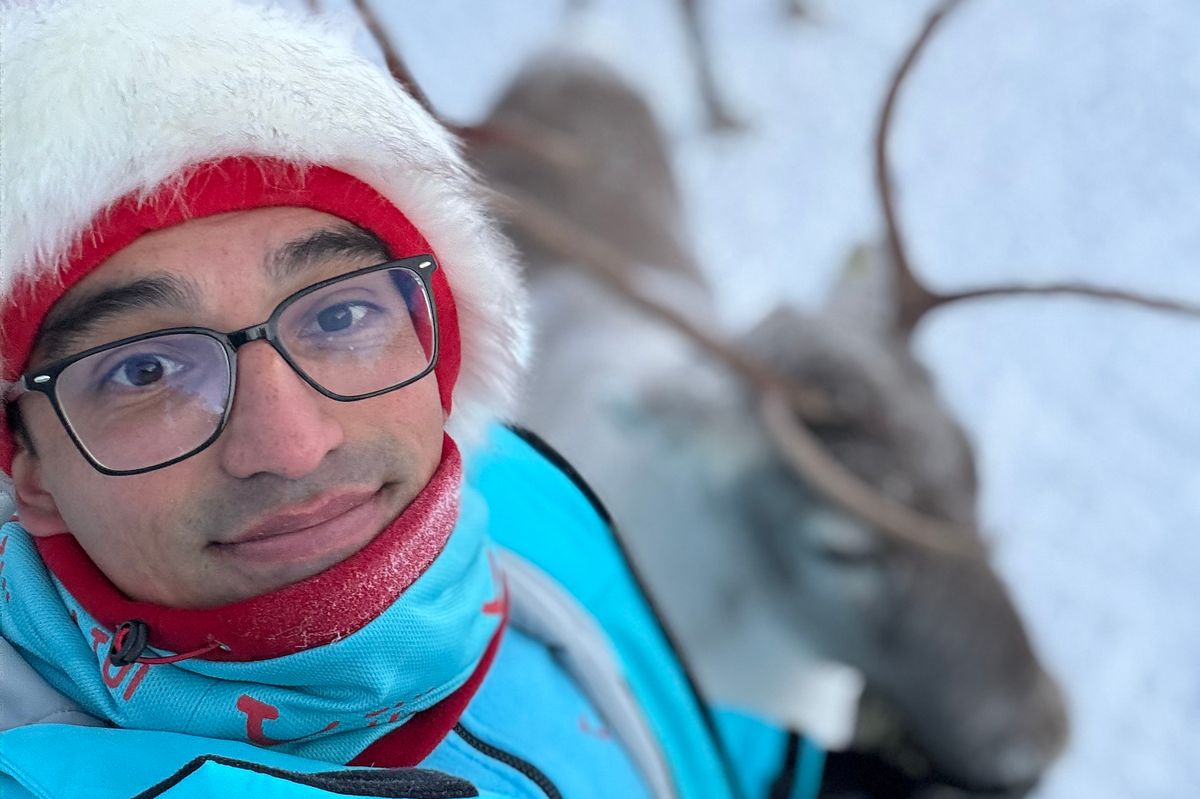From walking around in -32 degrees, eating Reindeer pizza, to having just a few hours of daylight – here’s what it’s really like to work in Lapland over Christmas
Lapland is one of the most enchanting and Christmassy places in the world during this time of year, with its snow-dusted forests and roaming reindeer. Yet, imagine if the Arctic wilderness was the backdrop to your working day? And we’re not talking about being Santa Claus.
Saul Vendrig Castillo compares his office to a ‘real-life snow globe’ as he spends the most wonderful time of the year in Lapland, Finland, as a TUI representative. His job is to help create unforgettable moments for families who visit the magical winter wonderland, and it certainly comes with its perks.
“Every day I’m surrounded by snow, excitement and pure joy. Kids step off the plane with their mouths open in amazement, and you can feel the Christmas magic in the air. It’s like working inside a real-life snow globe!”, Saul said.
“Lapland is one of the only places on earth you can experience the magic of gliding through snowy forests, wrapped up warm, with a majestic reindeer leading the way. It’s peaceful, magical and gives you time to soak up the Lapland winter wonderland.”
Yet, it can come with its challenges as he revealed: “In December, we get just over two hours of daylight, which means at 4pm, it can feel like bedtime.” However, that hasn’t stopped Saul from making the most of the local delicacies, including one that some might frown upon.
“Reindeer pizza is amazing, and much better than I expected! I can also highly recommend a liquorice cake with blueberry ice cream that I ordered a few days in a row, as it was so good,” said Saul.
His job in Lapland can range from greeting families at the airport, helping them with their snowsuits and boots, to organising thrilling outdoor excursions such as husky sleigh rides, reindeer safaris or snowmobiling.
“The children get to ride in sledges pulled by a team of energetic huskies. The sound of their paws on the snow and the speed of the sledge make it an unforgettable adventure. Everyone leaves smiling and talking about it for days,” he explained.
But he confessed that the most rewarding part of his job is seeing the smiles on the children’s faces when they meet Santa. “When families visit Santa, it’s really special,” he shared.
“The children get to meet him in his cosy, twinkling cabin, tell him what they’ve been wishing for, and even receive a little gift to take home. The excitement in their eyes is priceless, and it’s magical for the parents to see too.”
Saul added: “When a child sees their first reindeer or throws their first snowball, that’s the moment you realise how special this job is. Then you take them to meet the Big Man, and their faces light up in a way you never forget. Parents often tell me this is the Christmas they always dreamed of giving their kids, so it’s really special to be a part of that experience.”
Currently in Lapland for his second season with TUI, Saul has picked up a few handy tips for those looking to visit the enchanting destination. He advised: “Make sure you bring lots of loose layers to wear under your snow suit as they trap the heat, whereas tight clothes can make you colder fast. And once you feel the chill, it’s hard to get rid of it, some days it can get to –32 degrees.”
He added that because Lapland only gets just over two hours of daylight in December, it’s best to “plan your activities with this in mind to really maximise those daylight hours”.
Additionally, Saul suggested: “For many people visiting Lapland, their bucket list goal is to see the Northern Lights, and my one piece of advice is to always be patient with them. They can be unpredictable, but they really are a sight to behold when they appear in the evening.”
During the summer season, Saul works as a TUI rep in various countries, including Greece, the Costa del Sol, and Mallorca. Yet, there’s something about Lapland, “The snow, the lights, the magic, the excited families always pull you back. There’s nowhere else like it,” he said.
If you’re interested in soaking up the festive merriment or planning a winter getaway for next year, TUI offers various packages to Lapland, departing from regional airports across the UK. The packages typically include flights, snowsuits, activities and transfers, and of course, the chance to meet Santa and witness the Northern Lights.
Do you have a travel story to share? Email webtravel@reachplc.com

